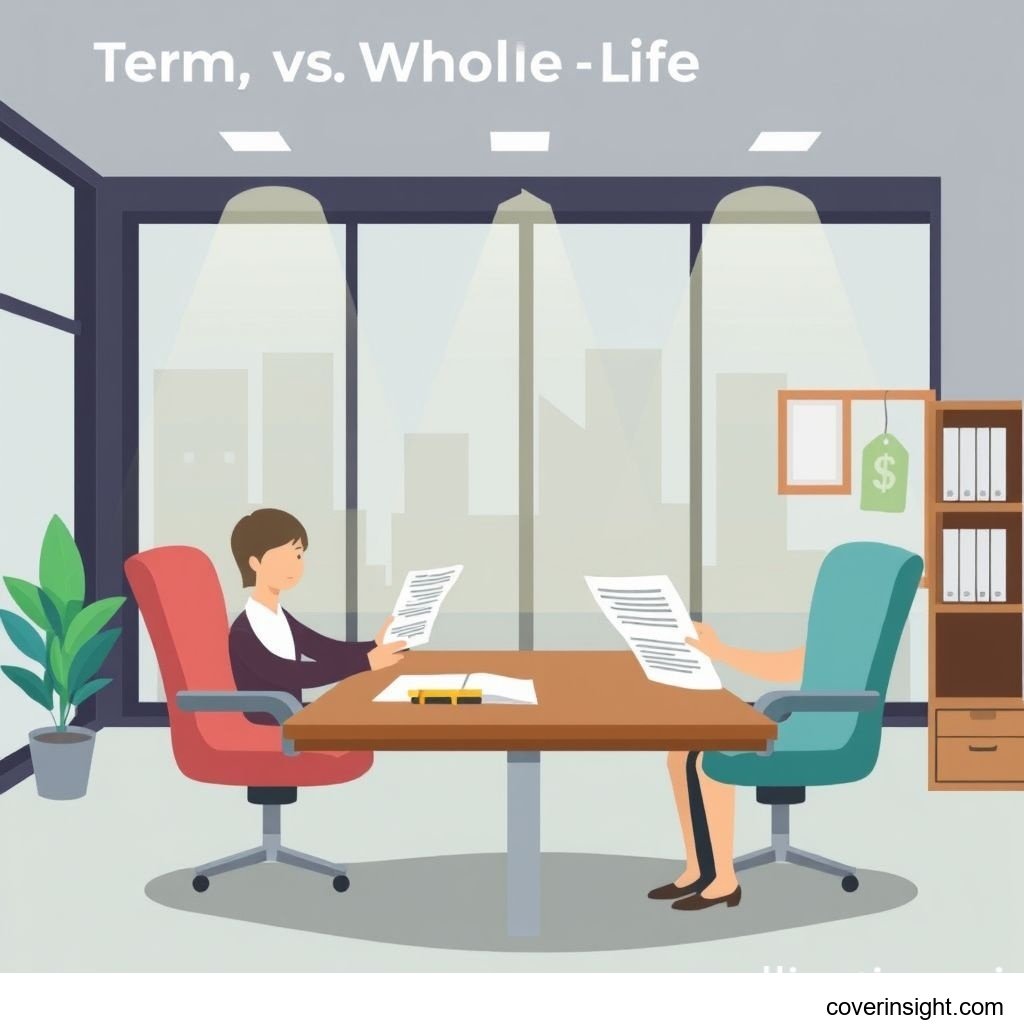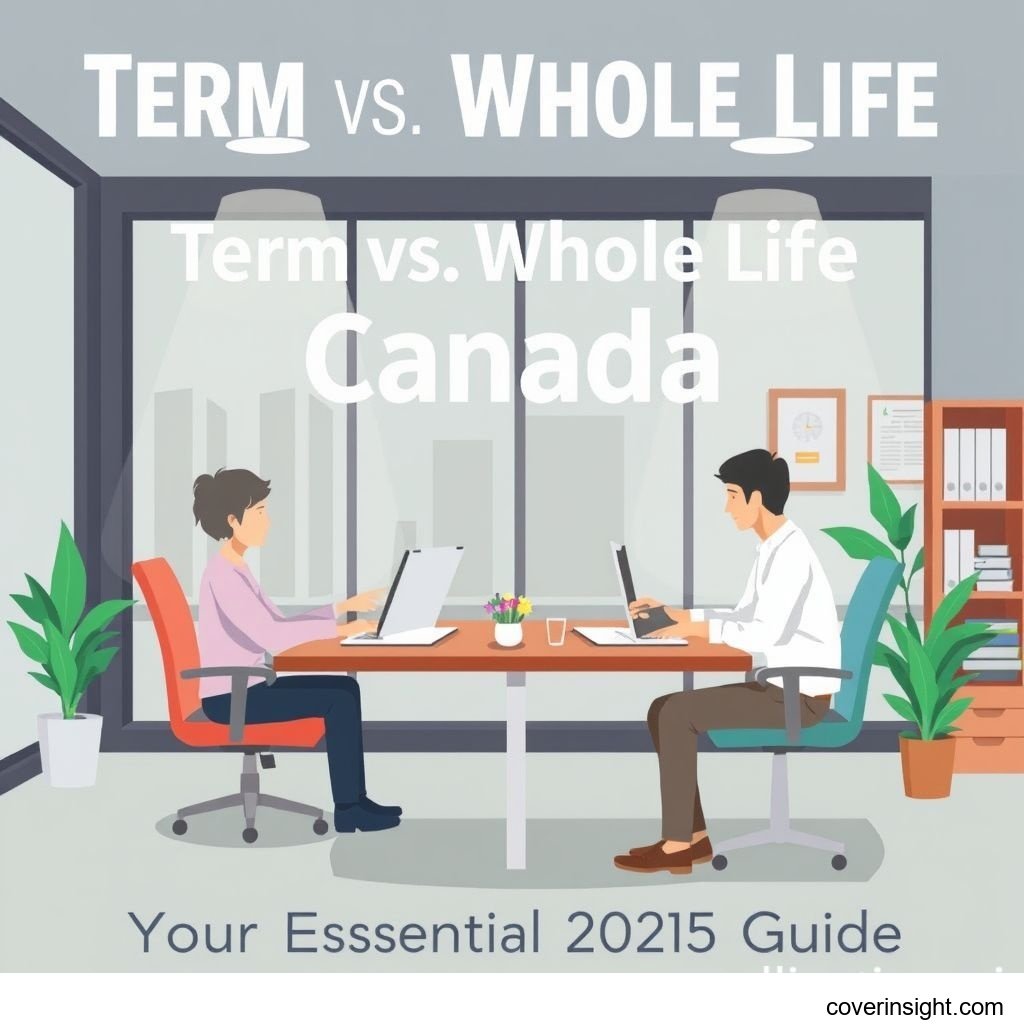Introduction
Navigating the world of life insurance can feel like trying to skate uphill in a blizzard, especially when you're weighing your options for the long haul. As we look towards 2025, understanding the distinctions between Term vs Whole Life Canada becomes ever more critical for Canadian families and individuals. This guide aims to clear the fog, helping you make an informed decision that aligns with your financial goals and provides peace of mind. After all, protecting your loved ones is, for many, the ultimate goal, and choosing the right policy is paramount.
Coverage Details
Choosing between term and whole life insurance boils down to understanding what each type of policy is designed to do.
What’s Included
Term Life Insurance offers coverage for a specific period, typically 10, 20, or 30 years. It's often compared to renting a home – you pay for the coverage you need for a set time. If you pass away within the term, your beneficiaries receive a tax-free death benefit. It's generally the more affordable option, making it popular for covering specific, time-bound financial needs like a mortgage, raising children, or a period of high debt.
Whole Life Insurance, on the other hand, provides coverage for your entire life, as long as premiums are paid. Think of it as owning a home – it's a permanent asset. Beyond the death benefit, whole life policies also accumulate cash value over time on a tax-deferred basis. This cash value can be accessed through withdrawals or policy loans, offering a financial resource for various needs, such as supplementing retirement income or covering emergencies. It's often used for estate planning, ensuring a legacy, or providing funds for final expenses, no matter when death occurs.
Common Exclusions
While both types of policies provide crucial protection, it's vital to be aware of common exclusions. These typically include death resulting from:
-
Material Misrepresentation: Providing false or incomplete information on your application.
-
Suicide Clause: Most policies have a clause (often for the first two years) where if death occurs by suicide, the death benefit may not be paid out, though premiums paid might be refunded.
-
Illegal Activities: Death occurring while committing a criminal offense.
-
High-Risk Hobbies/Occupations (undisclosed): If you engage in activities like extreme sports or have dangerous jobs and don't disclose them during application, a claim could be denied.
-
War or Acts of Terrorism: Though rare, some policies might exclude death in declared war zones or due to terrorist acts.
Always review the policy document thoroughly, as exclusions can vary between providers. If you need more detailed information, exploring general “Insurance Resources Global” can be a good starting point, but always verify specifics with Canadian providers.
Cost Analysis
The cost of life insurance is a significant factor for most Canadians. Understanding what drives premiums and how to save can make a big difference.
Price Factors
Several elements contribute to the premium you'll pay for both term and whole life insurance:
-
Age: This is perhaps the biggest factor. The younger and healthier you are when you apply, the lower your premiums will be.
-
Health: Your medical history, current health status (including chronic conditions, weight, cholesterol, blood pressure), and lifestyle choices (smoking, alcohol consumption) heavily influence rates. Smokers, for instance, often pay two to three times more than non-smokers.
-
Gender: Generally, women tend to pay less than men due to longer life expectancies.
-
Coverage Amount: Naturally, a higher death benefit means higher premiums.
-
Policy Type: Whole life policies are inherently more expensive than term policies for the same death benefit when you're younger, primarily because of the cash value component and the guarantee of lifelong coverage.
-
Term Length (for Term): Longer term lengths typically mean slightly higher premiums.
For example, a healthy 30-year-old Canadian might pay around $20-$30 per month for a $500,000, 20-year term policy, whereas a whole life policy for the same amount could easily be $200-$400+ per month due to its permanent nature and cash value growth.
Saving Tips
Keeping costs down doesn't mean compromising on essential coverage:
-
Buy Young and Healthy: This is the golden rule. Premiums are locked in, so locking in a low rate early can save you a fortune over the policy's life.
-
Quit Smoking: If you're a smoker, quitting for a sustained period (often 12 months) can significantly reduce your premiums.
-
Improve Your Health: Managing chronic conditions, maintaining a healthy weight, and exercising can lead to better health ratings and lower costs.
-
Bundle Policies: Some insurers offer discounts if you purchase multiple policies (e.g., life and home insurance) from them.
-
Re-evaluate Periodically: For term insurance, as your needs change (e.g., mortgage paid off, kids grown), you might need less coverage, allowing you to reduce your premium on renewal or convert part of it.
-
Shop Around: Don't settle for the first quote. Different insurers have different underwriting guidelines and pricing structures. Comparison shopping can yield significant savings.
FAQs
How much does term vs whole life Canada cost?
As mentioned, costs vary widely. For a 30-year-old non-smoker, a $500,000 20-year term policy might be $20-$40/month, while a comparable whole life policy could range from $200-$500+/month due to its permanent nature and cash value accumulation. It truly depends on the individual’s health, age, and desired coverage.
What affects premiums?
Your age, health (medical history, lifestyle choices like smoking), gender, and the amount and type of coverage (term vs. whole life) are the primary determinants of your premiums. The healthier and younger you are, the less you'll generally pay.
Is it mandatory?
No, life insurance is not mandatory in Canada. However, it's a critical financial planning tool that can provide a safety net for your dependants, cover debts, and ensure financial stability after your passing. It's less about being mandatory and more about being a responsible step for your loved ones.
How to choose?
Choosing between Term vs Whole Life Canada often comes down to your financial goals and current life stage.
-
Term life is ideal for specific, time-limited needs, like covering a mortgage, providing income replacement until children are grown, or paying off debt. It's often the more budget-friendly option. A real-world example: The Smiths, a young couple in Calgary, opted for a 25-year term policy to match their new mortgage. This ensured their young family wouldn't be left with a huge debt if something happened to one of them.
-
Whole life is better suited for lifelong needs, such as estate planning, covering final expenses, or creating a legacy. The cash value component also offers a savings vehicle. If you're looking for something that lasts your entire life and has a savings component, whole life might be a better fit. As per LIMRA's 2023 Canadian Life Insurance Ownership Study, 86% of Canadian households own some form of life insurance, demonstrating the widespread belief in its importance for financial security. To delve deeper into what's right for you, consider visiting "CA Insurance Home" for more tailored Canadian advice.
Consequences of no coverage?
Without life insurance, your loved ones could face significant financial hardship upon your death. This might include:
-
Unpaid Debts: Mortgage, car loans, credit card debt.
-
Loss of Income: If you're a primary earner, your family would lose that vital income stream.
-
Final Expenses: Funeral costs and estate administration fees can be substantial.
-
Future Planning: Funds for education, retirement, or other long-term goals could be jeopardized.
It's a tough pill to swallow, but thinking about these scenarios is essential for sound financial planning. Many Canadians rely on the guidance provided by bodies like the Financial Consumer Agency when making such important decisions, or refer to resources from the Insurance Bureau of Canada for industry insights.
Author Insight & Experience: Based on my experience living in Canada and observing the financial realities many families face, one common thread is the desire for security. Whether it's the peace of mind that comes with knowing a mortgage will be covered, or ensuring a legacy for future generations, life insurance isn't just a product; it's a promise. I've seen firsthand how a well-chosen policy can make a world of difference during life's most challenging moments, preventing a family's financial future from going completely off the rails. It's not about predicting the future, but rather preparing for it, come what may.







Comments